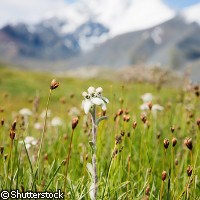Europe's plant communities losing uniqueness, study warns
A combination of extinctions and alien invasions is causing Europe's plant communities to become less unique, according to new EU-funded research published online in the journal Proceedings of the National Academy of Sciences (PNAS). EU support for the study came from the DAISIE ('Delivering alien invasive species inventories for Europe') and ALARM ('Assessing large scale risks for biodiversity with tested methods') projects, both of which are financed under the 'Sustainable development, global change and ecosystems' Thematic area of the Sixth Framework Programme (FP6). One of the commonest ways of assessing biodiversity in a given region or area is to simply count the number of species living there. However, as this latest study reveals, it is also important to work out how closely related the species in a given community are to each other. This is important because a plant community made up of largely unrelated species is more likely to be able to withstand pressures such as changing temperatures or drought. In contrast, in a community of closely related species, if one is unable to withstand high temperatures, for example, chances are that closely related species will also struggle to survive. In this study, the researchers analysed data on the plant species found in different regions of Europe since the year 1500. There are around 11,000 native species of plant in Europe. Since 1500, around 1,600 non-native plant species have arrived in Europe, and 1,700 European species have invaded other European regions to which they are not native. This means that some 53% of plant invasions in Europe can be attributed to species moving from one European region to another. Over the past few centuries, only two European plant species have completely died out. However, around 500 species have become extinct at regional level. For example, the plant blue woodruff (Asperula arvensis) has disappeared from Germany and Austria, largely as a result of the intensification of agriculture, but is still found in Italy and Spain. The fact that invasions vastly outnumber extinctions means that the total number of plant species in European regions has risen. However, the species that have disappeared tend to be relatively rare, and come from plant families that have comparatively few members. In contrast, the invasive species tend to come from species-rich families and are often closely related to species already living in the region. In practice, this means that while the total number of species in the regions studied is rising, the plants within the regions are increasingly similar and the differences between regions are disappearing as the same plants increasingly crop up everywhere. 'Our studies have demonstrated that although the number of species in European regions is rising as the new species outnumber the species that have disappeared, the regions are increasingly losing their phylogenetic and taxonomic uniqueness,' commented Dr Marten Winter of the Helmholtz Centre for Environmental Research (UFZ) in Germany. 'When discussing biological diversity, as well as the pure species number, people should also consider other measures of biological diversity, such as the relationships between the species, for example. These can provide important additional information on the condition and possible risks to the ecosystem.' Researchers participating in the PNAS study come from the Czech Republic, Germany, Greece, Lithuania, New Zealand, Spain, Switzerland and the UK.



